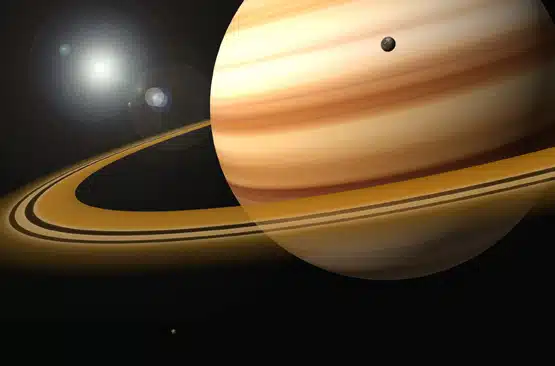An international team of astronomers has discovered the oldest and most distant carbon in the Universe, but there’s not enough of it to support standard theories of how the Universe lit up, a member from Swinburne University of Technology has calculated.
In the early Universe a dark pervasive fog of neutral hydrogen gas lurked everywhere. Astronomers think that this fog cleared when the first stars formed and emitted light.
There is a close connection between the amount of light and carbon produced in stars. But adding up all the 13-billion-year-old carbon detected, Dr Emma Ryan-Weber and her collaborators came to the conclusion the amount of carbon, and therefore the number of massive stars, was insufficient to lift the fog.
“So light must come from somewhere else, perhaps an unknown population of quasars, or stars that lock-up more of their carbon, or carbon hidden in unobserved states.”
When the Universe began with the big bang only hydrogen and helium existed. After the first massive stars exploded as supernovae they sprinkled their products of carbon and other elements-of which you, I, and the Earth are comprised-all over the cosmos.
The researchers know the carbon they have discovered is old because it was detected in the infra-red wavelength rather than in the ultra-violet as on Earth. The Universe has expanded so much since the Big Bang, that the wavelength of the light from carbon atoms has stretched from 155 to 1085 nanometres by the time it reaches the Earth.
Even though astronomers have been observing intergalactic carbon for many years, no-one had tried to detect it in the early Universe, because this involved looking in the near-infra-red. Observations in the near-infra-red are challenging because of the interference of intense ‘airglow’ lines in the night sky.
The details surrounding the end of the dark Universe, a process know as ‘re-ionisation’, are among the last mysteries of modern cosmology. Astronomers have yet to discover when the starlight from the first galaxies lit up the Universe, ionising the surrounding neutral hydrogen gas. And they don’t know how massive these galaxies were, or whether they contained the same types of stars as we see today.
Even measurements suggesting the greatest number of galaxies in the early Universe could only lead to just enough light to lift the fog if the conditions are tweaked in the right way. Emma’s survey of intergalactic carbon in the early Universe provides a completely independent measure of the amount of starlight.
“A lot more starlight is needed to lift the fog. It’s like going from a visibility of a metre to being able to see a kilometre down the road.”
Emma and her collaborators are planning further observations to search for carbon in a different state to see if it can make up the shortfall of starlight.
The observations of early carbon took place in collaboration with Prof. Piero Madau from the University of California at Santa Cruz, and Prof. Max Pettini and PhD student Berkeley Zych at Cambridge University in the UK. They used the European Southern Observatory’s eight-metre Very Large Telescope in Chile as well as the 10-metre W.M. Keck Telescope in Hawaii. The results have recently been published in the Monthly Notices of the Royal Astronomical Society.
Emma Ryan-Weber is one of 15 early-career scientists presenting their research to the public for the first time thanks to Fresh Science, a national program sponsored by the Federal Government.
For further information, contact Emma Ryan-Weber on 0408 382 725 or eryanweber@swin.edu.au or Crystal Ladiges, Swinburne media officer on (03) 9214 5064 or 0416 174 880
For Fresh Science contact: Niall Byrne on 0417 131 977 or niall@freshscience.org.





 Fresh Science is on hold for 2022. We will be back in 2023.
Fresh Science is on hold for 2022. We will be back in 2023.